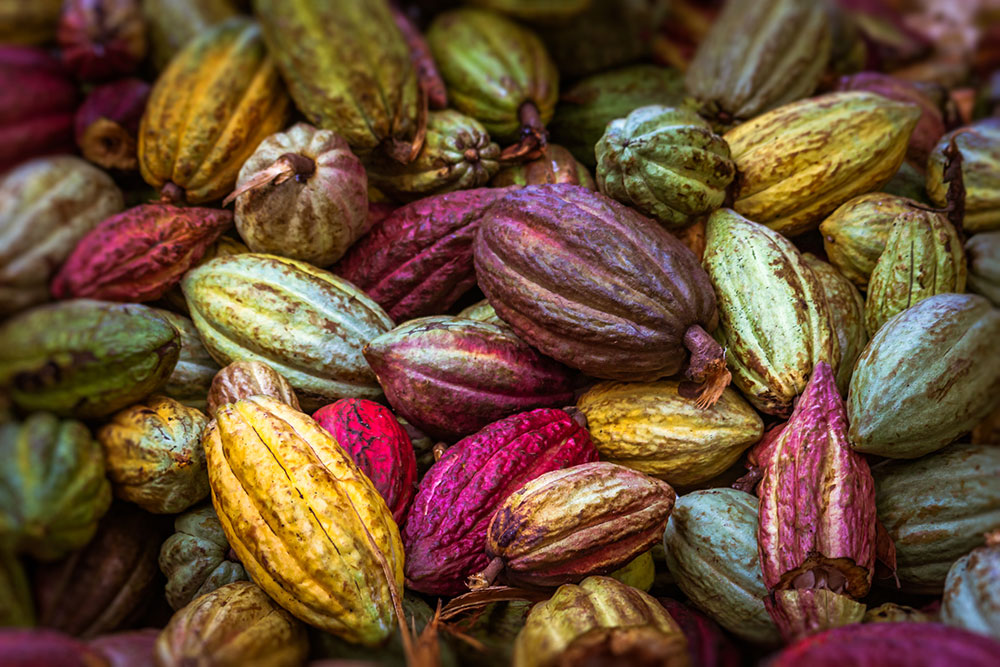Sustainable and traceable cocoa: a standard to savour

After six years of discussions, the cocoa industry has agreed on the criteria for sustainable production. These are set out in a brand new ISO standard, establishing a common language from planter to consumer. To be discovered on October1, 2019 on the occasion of World Chocolate Day.
Several days on a jungle track to reach a one-hectare plantation run by the same family for generations: this is how most cocoa farms are organized around the world. These small, isolated plots are typical of the industry’s quest for sustainability and traceability, in response to new consumer demands. But what is sustainable cocoa? How can we organize the traceability of raw materials, from the bean to the supermarket, when producers are so fragmented?
These questions have now been answered by a voluntary international standard with a bitter name, “ISO 34101”, but which hides a nugget. “The starting point? A shared desire to unite the entire industry, recalls Sandrine Espeillac, head of AFNOR Normalisation’s agri-food division. Consumers were demanding ‘responsible’ products. Against a backdrop of ageing cocoa plantations and declining attractiveness, against a backdrop of environmental concerns, all stakeholders wanted to define shared rules for sustainable cocoa”.
Deforestation and child labor
Six years of work will have been necessary to reconcile the sometimes divergent points of view of the various players on a global scale. ” If deforestation is not acceptable from a European point of view, it can be linked to questions of survival from the point of view of producing countries” , illustrates Florence Pradier, General Secretary of the Syndicat du Chocolat. Indeed, cocoa trees can’t age too long on the ground, otherwise they lose yield (over 20 to 25 years), and the average age of plantations is 30 years in Ghana and Côte d’Ivoire and 45 years in Cameroon, posing the challenge of renewal.
Another example is child labor, prohibited in Europe but common in developing countries, particularly on family plantations. The participants therefore agreed to adopt the conventions of the International Labour Organization as a reference: it is tolerated if it contributes to the family economy, does not interfere with children’s schooling and does not endanger them. A question of compromise. To help producers make a smooth transition, the voluntary standard defines three progress thresholds for these sensitive criteria.
The standard is divided into 4 parts. The first deals with the cocoa sustainability management system, inspired by ISO 9001 (quality) and ISO 14001 (environment) standards. The second defines the sustainability criteria, divided into three main categories: environmental, economic and social. The aim is to improve living conditions for producers while respecting the environment. The third part looks at traceability and ways of ensuring that cocoa beans come from sustainable plantations, in line with the criteria set out in Part2. A fundamental aspect in a sector marked by long circuits and a large number of intermediaries. Finally, Part4 describes the valuation methods used.
ISO 34101: a standard to crunch on
This text marks a major step forward,” says Florence Pradier with satisfaction. It takes into account both upstream issues – producers’ living conditions – and downstream issues – consumers’ expectations – and defines a framework shared by the entire sector and its stakeholders. stakeholders. ” And what about the well-known consumer labels for organic and fair-trade chocolate? “These labels focus on a single aspect of sustainable development: the environment in the case of organic labels, or social issues in the case of fair trade labels. In contrast, the voluntary standard encompasses all the criteria linked to sustainable production systems: economic, environmental and social, nuance Florence Pradier. The text of the standard may be less precise on certain aspects, but it’s broader.”
Professionals have already started to take hold of this ISO 34101 standard, published in May 2019 and recently included in the NF collection. Growers are forming cooperatives to improve traceability, a real challenge in the face of a host of plantations. And to encourage farmers in their efforts, some manufacturers have pledged to pay a premium of $400 per tonne of cocoa to producers who meet the criteria of the voluntary standard. On your tablets!
- 30%: In Ghana and Côte d’Ivoire, 3 out of 10 children work
- 20 to 25 years: The age at which cocoa trees reach maximum production. However, the average age of plantations has reached 30 years in Ghana and Côte d’Ivoire and 45 years in Cameroon, posing the challenge of renewal.
- 7: 7 countries produce almost 90% of the world’s cocoa: Côte d’Ivoire (43%), Ghana (19%), Indonesia (7%), Ecuador (6%), Nigeria (5%), Cameroon (5%), Brazil (4%).
- 10: 90% of the world’s farms are less than 10 hectares in size
- 6.6 kg: Per capita consumption per year in France
Source: Syndicat du chocolat
Getty Images/Pierre-Yves Babelon